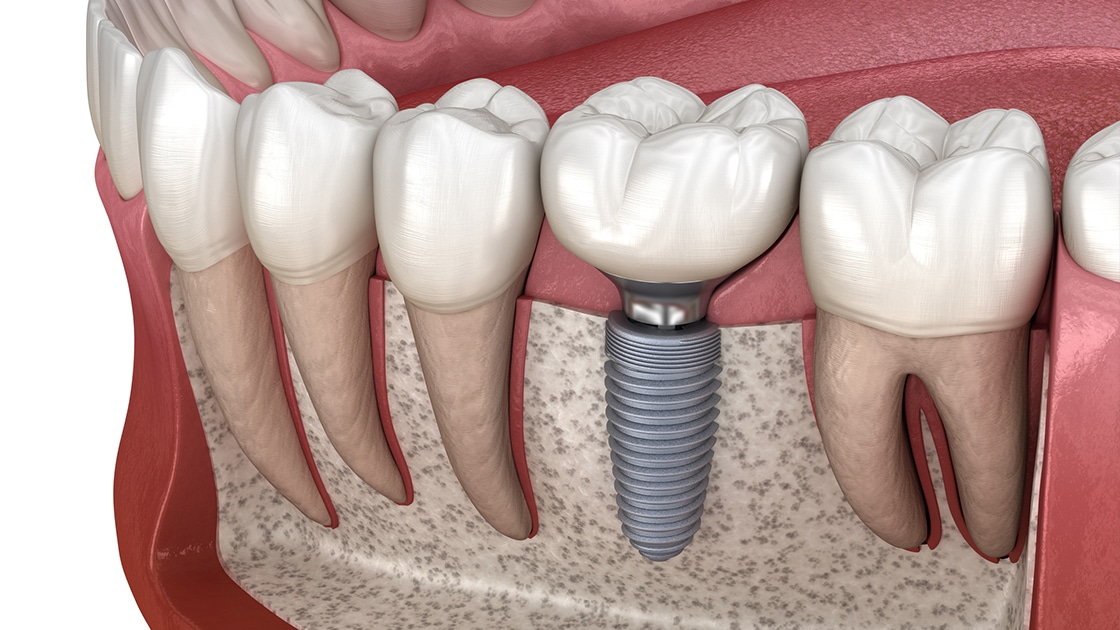7 Easy Facts About Dental Sense Described
7 Easy Facts About Dental Sense Described
Blog Article
The Facts About Dental Sense Uncovered
Table of ContentsOur Dental Sense PDFsDental Sense Can Be Fun For AnyoneDental Sense Can Be Fun For AnyoneSome Known Questions About Dental Sense.
are medical gadgets surgically dental implanted right into the jaw to recover a person's capacity to eat or their appearance. They provide support for artificial (phony) teeth, such as crowns, bridges, or dentures. When a tooth is lost because of injury or condition, an individual can experience complications such as rapid bone loss, defective speech, or changes to chewing patterns that result in pain.Oral dental implant systems contain a dental implant body and dental implant abutment and might likewise consist of an abutment fixation screw. Dental veneers cost. The oral implant body is operatively put in the jawbone in area of the tooth's origin. The dental implant joint is typically affixed to the dental implant body by the joint fixation screw and extends via gum tissues right into the mouth to support the attached man-made teeth
(https://www.kickstarter.com/profile/dentalsense1/about)Framework of The Dental Implant System choosing dental implants, talk to your dental service provider regarding the potential advantages and risks, and whether you are a prospect for the treatment. Points to take into consideration: Your total health and wellness is an important consider establishing whether you are a good prospect for oral implants, the length of time it will certainly require to recover, and for how long the dental implant may stay in place.
Cigarette smoking might affect the healing process and reduce the long-lasting success of the dental implant. The healing procedure for the dental implant body might take a number of months or longer, throughout which time you commonly have a momentary abutment instead of the tooth. the dental implant treatment: Carefully follow the dental hygiene directions provided to you by your dental provider.
The Single Strategy To Use For Dental Sense
Implant failure can cause the demand for another operation to fix or change the implant system. Restores the capability to eat Restores aesthetic appearance Helps keep the jawbone from shrinking because of bone loss Maintains the wellness of the bordering bone and gum tissues Aids maintain surrounding (neighboring) teeth steady Improves lifestyle Damages to surrounding natural teeth throughout implant positioning Injury to the surrounding cells during surgery, such as sinus opening Injury throughout surgical treatment (for instance, fracture of surrounding jawbone) Poor function, such as feeling like the teeth do not bite with each other generally A sensation that the tooth is loose or twisting in position arising from a joint screw loosening up Implant body failure (looseness of the dental implant body) as a result of systemic infection, which may be more likely in people with unchecked diabetes as a result of local infection in bone and periodontals sustaining the dental implant body due to postponed recovery, which may be most likely in people who smoke Difficulty cleaning the gum tissues around the dental implant, resulting in poor oral health Unattended gum condition Post-surgical numbness because of nerve impingement or damage Constantly notify health treatment companies and imaging technicians that you have oral implants before any type of magnetic resonance imaging (MRI) or x-ray treatments.
FDA is not knowledgeable about any kind of damaging occasions reported for MRI or x-ray procedures with oral implants. Dental implants systems are commonly made of products that comply with worldwide consensus standards of the International Organization for Standardization (ISO) or ASTM International. These requirements have information of what makes a secure product.

An oral implant is a framework that replaces a missing tooth. With screw-like tools, the specialist inserts an implant right into the jawbone, and it acts as an anchor for a fabricated tooth, called a crown.
The Buzz on Dental Sense
Some people are not qualified for oral implant surgery. It is for dental specialists to run on people with: acute illnessuncontrollable metabolic diseasebone or soft tissue condition or infectionIf these issues are dealt with, an individual can have the surgical procedure. In, oral specialists avoid operating on individuals with: If individuals with any of the above undergo oral implant surgical treatment, there is a higher danger of the dental implant stopping working.

Oral dental implant surgery is an individualized process. It's not the very same for everyone. The complying with provides a basic introduction of what you can anticipate your dental professional, dental surgeon, periodontist or prosthodontist to do: Put the implant operatively. Provide you time to recover. Affix the message and final crown, bridge or denture.
Next off, your specialist will thoroughly put the dental implant right into your jaw. If your dental implant is near the front of your mouth, your dental expert will make a short-lived tooth for you to wear until you recover.
Fascination About Dental Sense
Your supplier can inform you what to anticipate in your circumstance. During the healing stage, your jawbone needs to fuse to the oral implant. This process, called osseointegration, is vital for security and long-term success. This procedure can take anywhere from 3 to 9 months. In some situations, it might take longer.
When your implant heals, your dental professional can affix the abutment (tiny port article) and your last repair (crown, bridge or denture). This typically takes regarding one hour to finish and may require a second minor surgery. You should not feel any pain during your oral implant procedure because your supplier will certainly make use of medicine to numb your gums.
Report this page